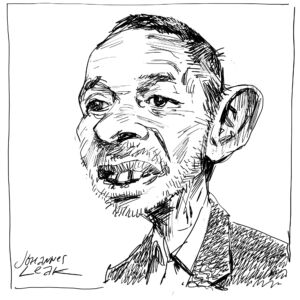The divided state of America
Charles Murray’s new book is a valiant effort to explain why America's upper classes are now so hollow and defensive, and incapable of marshalling the moral resources to lead society.

Want to read spiked ad-free? Become a spiked supporter.
The nineteenth-century British politician Benjamin Disraeli once characterised ‘the rich and the poor’ as ‘two nations between whom there is no intercourse and no sympathy; who are as ignorant of each other’s habits, thoughts and feelings, as if they were dwellers in different zones, or inhabitants of different planets’. It is a description that applies uncannily to contemporary American society.
I recall the first time I travelled to America – back in 1967 – having a discussion with my then girlfriend about how difficult it was to distinguish between the well-off and the not so well-off people on the streets of the places we visited. That was then. When I visit these days, I am struck by the contrast in appearance between rich and poor white citizens. They now look so different. They eat different food; they pursue different cultural interests; they speak differently; and, most important of all, they communicate values and attitudes that are often strikingly at odds with one another. It is all very redolent of the kind of social and cultural polarisation so prevalent during the nineteenth century.
Coming Apart: The State of White America, 1960-2010, Charles Murray’s exploration of the socioeconomic segregation that divides the US, is a valiant attempt to give a coherent account of this polarisation. What is important about Murray’s discussion of the intensification of the socioeconomic segregation of America is that it shows not simply the economic but also the cultural drivers of this process. So differences in income and living standards, and growing economic inequality, are also paralleled by a divergence in ‘core behaviours and values’. For example, Murray focuses on divergent attitudes towards marriage, industriousness, honesty and religion to demonstrate the disturbing fact that upper-class and lower-class Americans inhabit very different moral communities. His thesis is that this polarisation of cultural attitudes threatens the coherence of society and puts the American project at risk.
Murray’s description of two very different Americas shows that there are few experiences that the rich and the poor share with one another. His case study of Fishtown, a poor, unskilled, white working-class community, makes depressing reading. Family breakdown, high levels of unemployment, poverty and crime are facts of life in this Philadelphia neighbourhood. Yet the real problem does not originate in this community. What Murray seems to imply – but does not argue forcefully – is that it is America’s elites who are responsible for the weakening of the civic virtues that ensured the stability and relative well-being of working-class communities in the past.
Murray does not quite come to terms with the enormity of the moral disorientation amongst the American elite. At times, his contrast between the moral deficits of lower-class America and the success of the rich gives the impression that all is well in the more prosperous communities. In his profile of the SuperZips – communities of the really rich – the inhabitants are shown to be affluent and highly educated, and are depicted as having avoided high levels of family breakdown, unemployment, crime and other problems that afflict their fellow citizens. The people of the SuperZips are presented as industrious, motivated, creative and, above all, really smart. As parents, they are 110 per cent committed to their children. Murray also claims that community cohesion and social capital in these prosperous neighbourhoods are high and ‘has not taken the same downturn’ that it has taken elsewhere in America. And, apparently, the new upper class is ‘doing an excellent job of co-opting the new intellectual talent of each generation’.
It is only towards the very end of the book that the reader discovers that the super-rich are themselves confused about their own values and what they stand for. Historically, elites who take themselves seriously usually aspire to influence the life of their communities and to provide guidance and leadership. However, the new American upper class lacks this ambition to lead society. Its members enjoy their privileged lifestyle while refusing to assume any responsibility for the future of their society and the wellbeing of their less fortunate fellow citizens. Murray claims that the ‘new upper class still does a good job of practicing some of the virtues’ that made America a formidable land of hope, but ‘it no longer preaches them’, because ‘it has lost confidence in the rightness of its own customs and values, and preaches non-judgmentalism instead’. At the last, then, Murray concludes that this is a hollow elite, whose members have ‘abdicated their responsibility to set and promulgate standards’.
Murray is right to point to the incoherent and defensive moral sensibilities of the American upper class. But is it really the case that it does not preach what it practices? He notes that, at the very least, this ruling class preaches the doctrine of non-judgmentalism. He also observes that, from time to time, the new upper class feels comfortable with using derogatory labels, particularly towards fundamentalist Christians and rural working-class whites. However, the preaching of this privileged elite is not confined to the denunciation of the backwoods redneck and the gun-loving members of the National Rifle Association. In fact, when it comes to preaching, Murray’s SuperZips are in a class of their own. They may use a self-conscious rhetoric of non-judgmentalism – words like ‘inappropriate’ and ‘challenging’, or phrases such as ‘people in need of support’ and ‘people with issues’ – but they have no inhibitions about instructing others about what food they should eat, how they should bring up their children, or what forms of behaviour are healthy. Outwardly they eschew the language of morality. Instead of sermons, they use the language of ‘raising awareness’.
Indeed, it could be argued that the unprecedented level of socioeconomic segregation in America is actively promoted by an elite that is continually attempting to create and inflate behavioural and cultural distinctions between itself and the rest of society. What is important about its lifestyle is not so much the values that it invokes, but that it is different in every detail from those obese, junk-food eating, gas-guzzling, gun-obsessed, fundamentalist Joe Sixpacks. The elite project of ‘raising awareness’ serves as a form of self-flattery, through which the upper classes can highlight their moral superiority to the rest of society. After all, they are aware!
The reason why the new upper class is non-judgmental about the corrosion of family and community life in lower-class America is because it itself suffers from a virtue-bypass. Its own standards of behaviour lack a coherent foundation. Murray actually hints at this development in his discussion of the ‘vulgarisation of manners’ amongst this affluent minority. Contrary to Murray’s diagnosis of an elite that keeps its wonderful virtues to itself, one is struck by the calculating and instrumental orientation of this group towards moral norms. It depends on formulaic speech codes, codes of conduct, values and mission statements and ethics committees to regulate its behaviour. Its reliance on process and procedures betrays an absence of trust even amongst its own kind.
Possibly one reason why Murray does not draw out the depressing consequences of his analysis of a morally dissolute upper class is because he still holds out the hope that it can change its ways. ‘I am hoping for a civic Great Awakening among the new upper class’, he writes. But how is this ‘Great Awakening’ likely to materialise? Murray invests his hope in what he calls ‘a tidal change in our scientific understanding of human behaviour’. Specifically, he looks to the ‘findings of the neuroscientists and geneticists’ to demonstrate the superiority of the traditional family and the values associated with independence and hard work. What he really means is that having lost the moral and intellectual battle to uphold America’s founding virtues, the neuroscientist will come to the rescue of the great traditional ideals.
Murray’s conclusion serves as a testimony to the crisis of conservative and traditionalist thought. When the survival of morality becomes reliant on the findings of geneticists, you know that it is in trouble. Paradoxically, the target of Murray’s critique – the new upper class – is also addicted to neuro-determinism. Its eschewing of a moral language coincides with its use of brain research to explain every manifestation of human behaviour. It, too, uses neuroscientists and geneticists to explain that brain research shows why liberals are smarter than conservatives, why people become gay, or why children are likely to become criminals.
This new scientism is the other side of the non-judgmentalist coin. The mantra of ‘the research shows…’ represents the enthronement of non-judgmentalism. Politicians and public figures are no longer required to state that this policy is good or that one is wrong. Instead of making a judgment of value, they can hide behind ‘evidence-based’ policy and the rhetoric of ‘the research shows…’. Today, what research actually affirms are the prejudices of Murray’s new upper class. It is probably the most important weapon in the intellectual armoury of the raising-awareness crusaders.
Using socio-biology to explain social or cultural problems is a symptom of moral disorientation, not an antidote to it. What it encourages is not Murray’s Great Awakening but the continuation of the Great Evasion, the avoidance, that is, of the task of openly confronting the moral and intellectual problems of our time.
Frank Furedi’s On Tolerance: A Defence of Moral Independence is published by Continuum. (Order this book from Amazon(UK).) Visit his personal website here.
Who funds spiked? You do
We are funded by you. And in this era of cancel culture and advertiser boycotts, we rely on your donations more than ever. Seventy per cent of our revenue comes from our readers’ donations – the vast majority giving just £5 per month. If you make a regular donation – of £5 a month or £50 a year – you can become a and enjoy:
–Ad-free reading
–Exclusive events
–Access to our comments section
It’s the best way to keep spiked going – and growing. Thank you!










Comments
Want to join the conversation?
Only spiked supporters and patrons, who donate regularly to us, can comment on our articles.